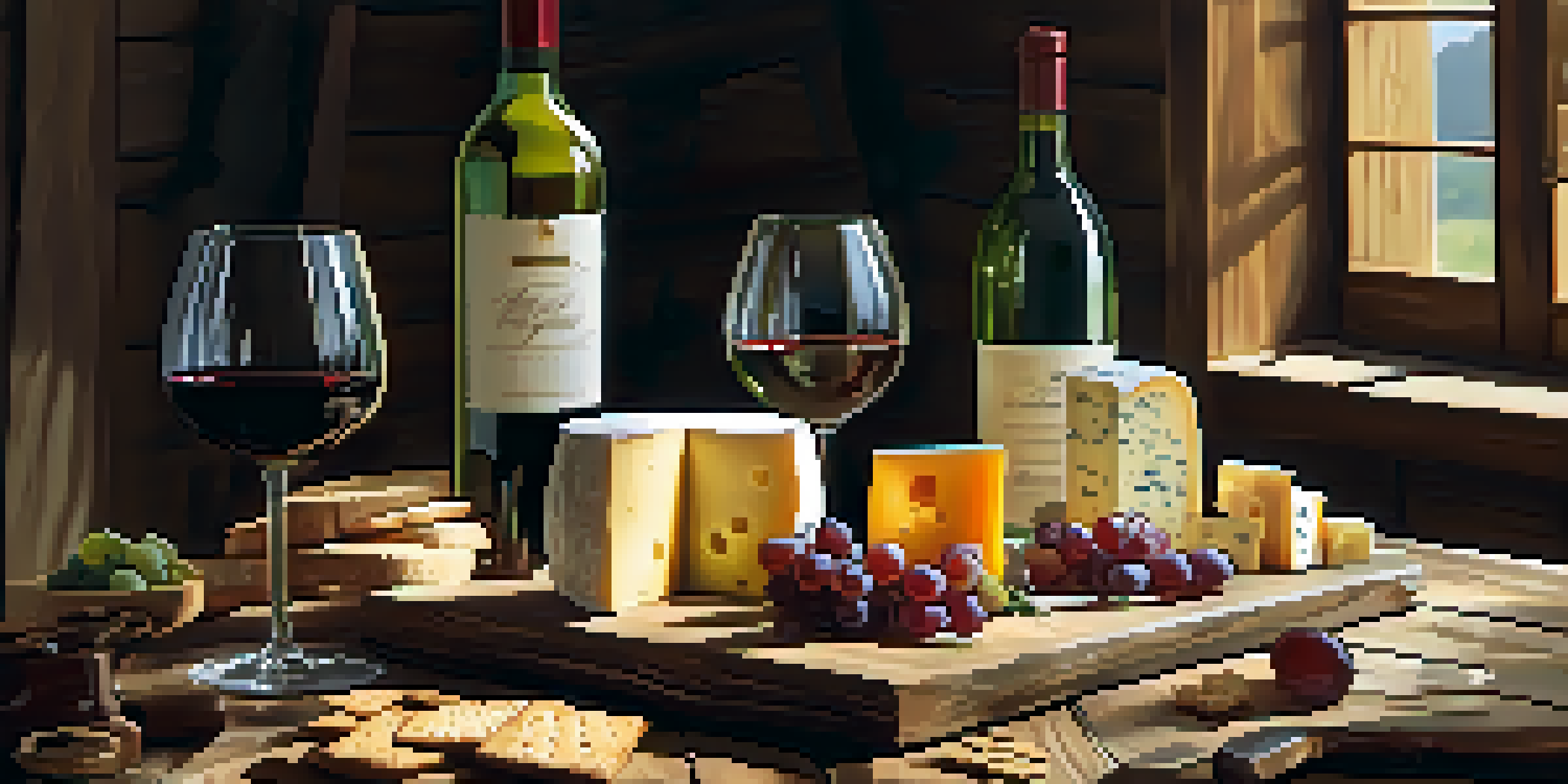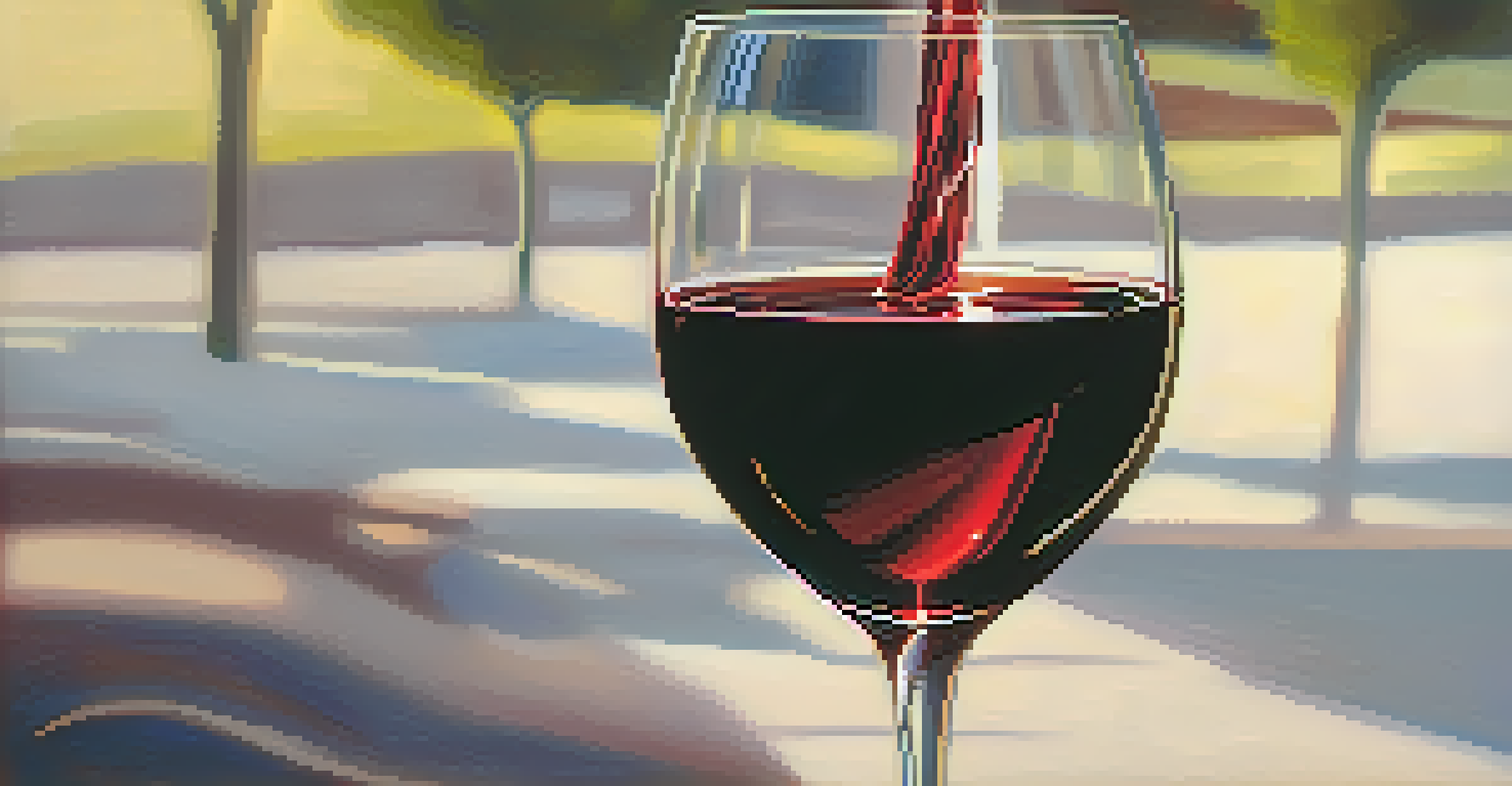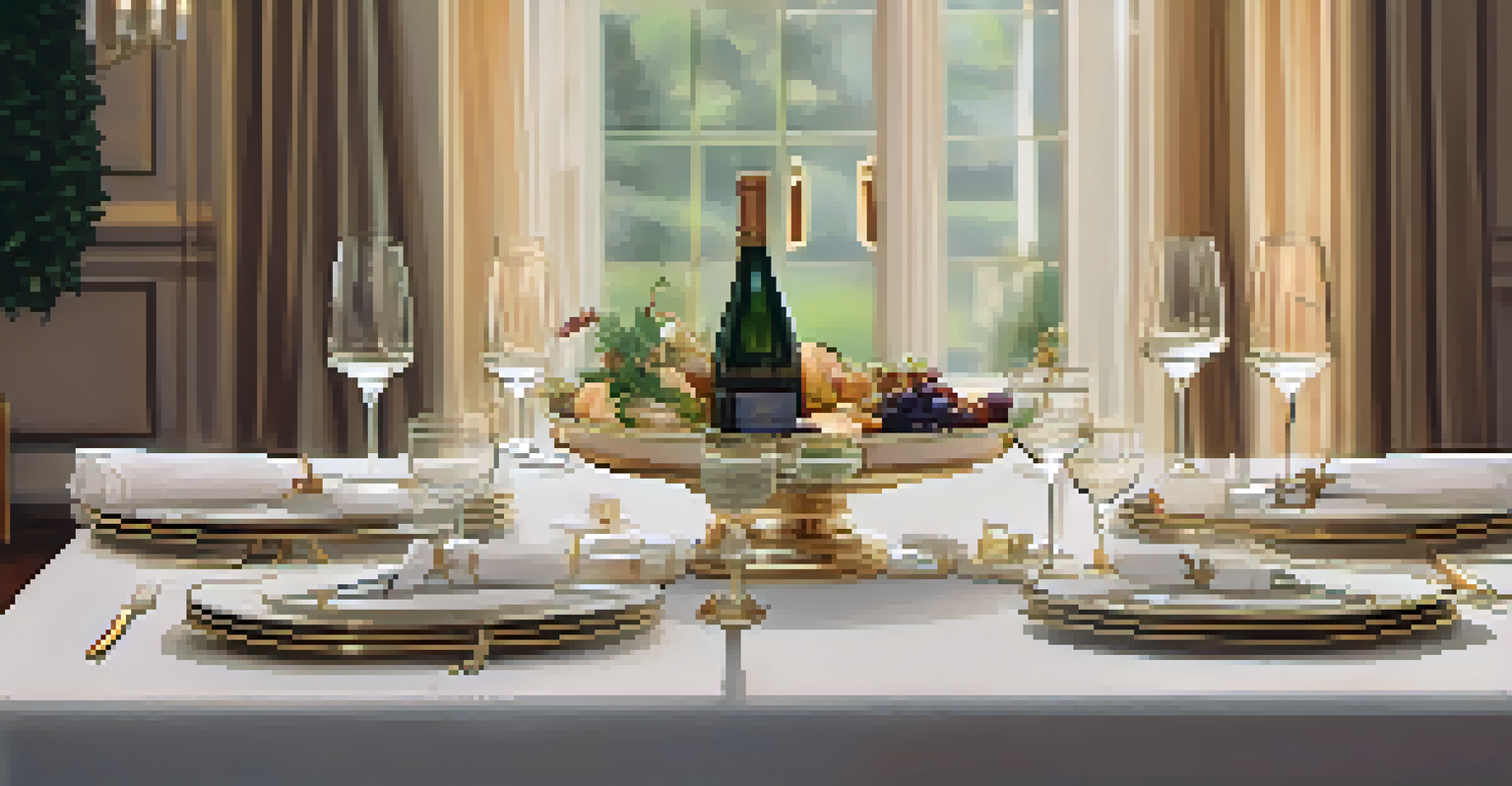Wine Tasting Techniques: Enhancing Your Sensory Experience

Understanding the Basics of Wine Tasting
Wine tasting isn't just about drinking; it's an art form that engages all the senses. To appreciate wine fully, it's essential to understand its components, including aroma, taste, and texture. Each of these elements contributes to the overall experience and can reveal a lot about the wine's origin and quality.
Wine is sunlight, held together by water.
Start by examining the appearance of the wine in your glass. The color can indicate the grape variety and age, while its clarity can suggest how well it was made. This initial observation sets the stage for a deeper exploration of the wine's character, preparing your palate for what’s to come.
As you dive deeper into tasting, remember that each sip tells a story. From the first encounter with the aroma to the lingering finish, every aspect is a clue to the wine's identity. Embracing this journey enhances your appreciation and enjoyment of the wine.
Preparing for the Perfect Wine Tasting
Preparation is key when it comes to wine tasting. Start by selecting a quiet, comfortable environment where you can focus on the wine without distractions. Gather the necessary tools, such as proper glassware, a notebook for your thoughts, and some palate-cleansing snacks like bread or crackers.

Consider the wines you'll be tasting and ensure they are served at the appropriate temperatures. Reds typically shine when slightly below room temperature, while whites are best enjoyed chilled. This attention to detail can significantly impact your sensory experience, enhancing the flavors and aromas of each wine.
Wine Tasting Engages All Senses
To fully appreciate wine, it's crucial to explore its aroma, taste, and texture.
Lastly, invite friends who share your interest in wine. Tasting is often more enjoyable as a group, where you can share impressions and learn from each other. This communal aspect can transform a simple tasting into a memorable event filled with laughter and discovery.
The Art of Swirling and Sniffing Wine
Swirling wine in your glass is more than just a showy move; it's a way to aerate the wine, allowing its aromas to fully develop. When you swirl, be gentle to avoid splashing, and observe how the wine coats the glass. The way it clings can indicate the wine's body and alcohol content.
In wine, there is truth.
After swirling, bring the glass to your nose and take a deep sniff. This step is crucial, as a significant portion of what you perceive as taste actually comes from your sense of smell. Take your time to identify different aromas, which can range from fruity and floral to earthy and spicy, creating a multi-dimensional experience.
Don't rush this part of the tasting process. Allow the wine to reveal itself gradually, as each sniff can uncover different layers. With practice, you'll start to recognize specific notes and characteristics, enhancing your overall appreciation and understanding of the wine.
Sipping: Discovering the Wine's Flavor Profile
Taking a sip of wine is where the real magic happens. As the wine hits your palate, pay attention to its initial taste, texture, and how it evolves. Is it sweet, sour, or bitter? Each sensation can tell you something about the grape variety and winemaking process.
Be mindful of the wine's body, which refers to its weight and fullness in your mouth. Light-bodied wines can feel refreshing and crisp, while full-bodied wines might seem rich and heavy. This aspect can greatly affect your enjoyment, depending on your personal preferences.
Temperature Affects Wine Experience
Serving wines at their ideal temperatures enhances their flavors and aromas.
Finally, consider the finish—the aftertaste that lingers after swallowing. A long, complex finish often indicates a high-quality wine. Reflect on how the flavors develop, and take notes on what you enjoy, as this can guide your future wine selections.
Pairing Wine with Food for Maximum Enjoyment
Wine tasting isn't just about the wine; food plays a crucial role in enhancing flavors. The right pairing can elevate both the wine and the dish, creating a harmonious experience. For example, a crisp Sauvignon Blanc pairs beautifully with fresh seafood, while a bold Cabernet Sauvignon complements a hearty steak.
When selecting a food pairing, consider the wine's characteristics. Lighter wines generally go well with lighter dishes, while richer wines can stand up to more robust flavors. This principle helps create a balanced plate that highlights the best of both the wine and the food.
Experimenting with different pairings can be a fun and educational part of the tasting process. Don't be afraid to try unconventional combinations and see what surprises await your palate. This exploration can lead to delightful discoveries and enhance your overall wine experience.
The Importance of Temperature in Wine Tasting
Temperature significantly impacts how we perceive wine. Serving wine too warm or too cold can mute its flavors and aromas, leading to a less enjoyable experience. Knowing the ideal serving temperatures for different types of wine is essential for maximizing your tasting experience.
Red wines are generally best served slightly below room temperature, around 60-65°F, while white wines shine when chilled to about 45-50°F. Sparkling wines typically benefit from even cooler temperatures, around 40-45°F. This attention to detail ensures that you experience the wine's full range of flavors.
Keep a Wine Journal for Growth
Documenting your wine experiences helps refine your palate and enhances your enjoyment.
If you're unsure about the temperature, a simple rule of thumb is to chill reds in the fridge for about 30 minutes before serving and whites for about 15 minutes. This can make a noticeable difference in how you experience the wine, allowing you to appreciate its character fully.
Keeping a Wine Journal for Future Reference
As you embark on your wine tasting journey, consider keeping a wine journal. This tool allows you to document your impressions, favorite wines, and food pairings. Over time, you'll build a valuable resource that reflects your evolving tastes and preferences.
In your journal, include details like the wine’s name, vintage, region, and tasting notes. Note the aromas and flavors you experienced, as well as how the wine paired with the food. This practice not only enhances your tasting skills but also helps you remember what you loved or didn’t enjoy.

A wine journal can also serve as a conversation starter among friends and fellow wine enthusiasts. Sharing your notes can lead to discussions about different wines and encourage you to explore new varietals and regions, enriching your overall wine experience.